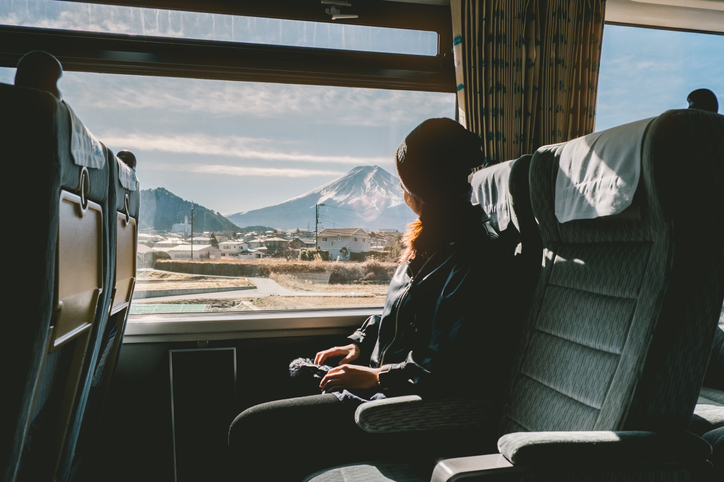Solo travelling is no longer only an option for those without travel partners sharing the same budget, time off or destination in mind. On the contrary, it is a constantly growing trend that has opened a new niche in the tourism market.
According to the Association of British Travel Agents’ (ABTA) “Holiday habits 2018” report, this figure has steadily grown in recent years. In fact, up to 15% of tourists have gone solo travelling in the last 12 months, compared to 12% in 2017 and 6% in 2011.
The main reason why people are choosing to go solo travelling is for the opportunity to do what they want in their free time, without needing to adjust to the tastes or requirements of any travel partners.
Another factor explaining this surge in popularity is the ease with which travellers can stay connected with friends and family, with Wi-Fi available in practically all destinations. The use of smartphones and mobile applications mean that solo travelling is no longer as solitary as it once was, with travellers able to connect with loved ones at the push of a button, making them feel like part of the experience. Social media also plays a significant role, with tourists able to view the stream of reactions from their followers to content that they publish online.
In June, ABTA is due to hold the second edition of its ‘Solo Travel’ conference, which will address the opportunities presented by this market and the things that solo travellers are really looking for.

Various entities from the sector will reveal the different factors that have caused this surge in popularity and will also disclose tips for ensuring that this type of tourist remains loyal to a particular brand. The conference will also hold a discussion about the information that needs to be provided by tour operators in terms of tourist safety, and the ways in which a tailor-made journey can be planned based on this information.
Many sectors are starting to take this trend very seriously, with analyses already being conducted about the best solo travelling destinations. The ‘US News & World Report’ recently named Spain as the world’s best solo travelling destination, followed by Italy and New Zealand.
This source considers Spain to be hugely attractive on a cultural level, with a rich heritage, delicious cuisine and friendly citizens. It is also felt to be a very safe country.
The 64-strong list is propped up by the United Arab Emirates, sitting in last place.
Options to consider
Solo travelling is no more complicated than travelling with company; however, it is sometimes more expensive, with most services conceived for at least two people. One of the travel expenses is accommodation, as the rates-per-room are for two people.
Thankfully, increasing numbers of companies are choosing to specialise in solo travellers, such as Exodus Travel and Intrepid Travels, making it easier to share accommodation with other people or find individual rooms. Some companies even focus on luxury travel, such as Abercrombie & Kent. If you’re considering a trip to Spain, you should take a look at yporquenosolo.com as it contains a wide range of pre-organised and scheduled trips for this year.
Another accommodation option that is particularly popular among young travellers is ‘couchsurfing’, where the traveller stays at the home of a person who lives in the chosen destination. This concept was conceived as a way of promoting cultural exchange, with tourists able to sign up at www.couchsurfing.com. When signing up, upload some photographs of yourself, explain a few things about yourself and state why you have chosen couchsurfing as an accommodation option. By providing this information, hosts are more likely to accept your request.
Some apps are even designed to be used by solo travellers at mealtimes. A growing trend is for travellers to immerse themselves in the local culture by having lunch or dinner in the house of a local resident. This is the service offered by the website eatwith, which allows users to reserve gastronomic experiences with validated hosts in 130 different countries.
Other applications, such as Feastly and BonAppetour, include the option of dinner with a show or live music, wine routes and food tours. This is a fantastic way to meet new people, learn about local customs and to enjoy the authentic cuisine of a country.

If, once you arrive at your destination, you would like to meet people, a good option is to attend a ‘meet up’ event. This is an online tool that makes it easier to find people with the same hobby as you, however weird it may be.
You can find these tips – and many, many more – in the Lonely Planet Solo Travel Handbook, which is designed to ease the fears of novice travellers.
While much of the solo traveller hotel and hostel market is yet to be exploited, some quieter, couple-friendly accommodation options are also appearing. Be sure not to get these confused with ‘adults only’ destinations.
In Spain, the Mas El Mir farmhouse (Ripoll, Girona), which lies at the foot of the Pyrenees, is a good example of this new type of accommodation. This farmhouse, far from the hustle and bustle of city life, only has 5 bedrooms. Here, guests can enjoy artisan products and access to an array of green areas in which they can find themselves.
Sigüenza (Guadalajara), meanwhile, is home to the Michelin-star Molino de Alcuneza. This small, family-run establishment also has a spa that can be used by guests.
Female travellers are braver
Surveys show that most solo travellers are female. In 2018, according to the Spanish Confederation of Travel Agents, 65% of all solo travellers were women, ranging from 35 to 65 years old. Experts have stated that these people are “daring, brave and with a greater cultural curiosity (than normal travellers)”.
Many solo trips are based on a personal challenge or target. Whether leaving your comfort zone, learning about new customs or problem solving, solo travelling is a real learning curve.






